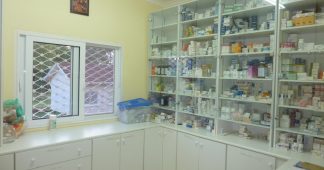Sep 23, 2019
Stereotypes exist for a reason. Russians do drink a lot. But they used to drink MUCH more. Russian (and Soviet) soldiers used to be notorious for drinking anything they could get their hands on. Many men drank their way into an early grave.
But the Russian government took notice. Since Putin came into office alcoholism has been declining. Russians are now healthier than ever.
Transcript:
The Ministry of Health warned, and it wasn’t in vain. People in Russia began to drink less. This is the main news of today’s Sobriety Day. It isn’t a state holiday but it’s celebrated quite widely. The tangible result of the all-Russian anti-alcohol campaign is expressed in specific figures, or liters to be exact.
It’s 8.7 liters (2.3 gallons) per person per year. That’s how much spirits Russians drink now. Deputy Minister of Health Oleg Salagay gave this data. He says that it’s still a lot, but it isn’t 18 liters (4.7 gallons) as before.
Other indicators related to alcohol also changed for the better, such as the dynamics of specific diseases and alcoholism is now diagnosed more rarely. Compared to 2009, the difference is almost 40%. Ten years ago, over two million people were diagnosed with alcoholism. Now, there are 1.3 million of them.
What can this anti-alcohol effect be attributed to? Vadim Zavodchenkov will try to explain.
– Good evening, Vadim.
– Good evening.
– How will people do without vodka?
– Well, Alexey, we can advise those, who can’t do without it, go to London. The statistics show that it’s much easier to find a drinking buddy there.
The indicator of 9.7 liters (2.3 gallons) per person per year is a bit higher than the European one and substantially lower than in many Western countries. For comparison, according to the recent WHO data, alcohol consumption per person in the UK is 11.4 liters (2.9 gallons). Germans drink 13.9 (3.4 gallons) liters of spirits per year. Lithuanians drink 15 liters (3.9 gallons).
Viktor Zykov, Ministry of Health employee: “If we compare the 2000s with the recent years, we see that the consumption per capita in 1999-2008 was 15-18 liters (4-4.7 gallons), according to different estimates, the consumption is now under 10 liters (2.6 gallons) per capita. There are now fewer cases of alcohol poisoning. If we take the indicators from 2008 when there were 16.9 cases of poisoning for 100,000 people, this figure is now 7.5.”
In the last WHO report dedicated to the problem of alcoholism, Russia was mentioned over 40 times, more often than any other country. But it’s mentioned only as a positive example. International experts state that since the beginning of the 21st century, the situation with alcohol abuse in our country has objectively improved. The WHO uses measures taken at the national level as an example for everyone. Russia managed to decrease alcohol accessibility.
Since the 2000s, it hasn’t been sold at night, near educational institutions, or at gas stations. The minimum alcohol price was increased. The policy of zero tolerance was introduced with respect to drivers. The maximum breath alcohol concentration is 0.16 permille. This is equal to the observational error. The main achievement of the past 20 years is that we’ve begun to treat alcohol abuse differently.
Sultan Khamzaev, Head of Sober Russia: “It was fashionable to drink in the 90s. In the 2000s, our citizens, especially young people, began to think about a healthy lifestyle more. In 2019, it’s fashionable to not drink. And it’s important to talk about it. If in the early 2000s when you said that you don’t drink, people looked askance at you, it’s now viewed as an achievement and something to be proud of. And this is our progress as a society.”
However, experts say that even the indicator of 9.7 is a lot. The amount of 8 liters (2.1 gallons) of spirits per person per year is considered relatively harmless. At the same time, every liter drunk in excess of the norm decreases a man’s life by 11 months and a woman’s by 4 months.
Features of national pastime activities worsen the situation in Russia. Specialists distinguish three types of alcohol consumption. Our type is northern. Northerners drink not often, mainly on holidays, but in large amounts, and almost solely hard liquors. This is also typical of the British Isles and Scandinavia.
The southern type is the opposite. It prevails in Italy, Spain, France. They drink almost every day but in small amounts and mainly wine. The central European type is somewhere in between them. They drink beer instead of wine.
So, the northern type is the most dangerous. At the same levels of consumption, alcohol will affect northerners’ health more.
Experts are sure that we shouldn’t be satisfied with what has already been achieved. The short-term task is to decrease the share of counterfeit in stores and achieve lower alcohol consumption among the youth. For example, there’s a suggestion that demotivating pictures showing the harm of spirits should be placed on the bottle’s label. There’s also a plan to prohibit the sale of hard liquors to those under 21 years old. The Ministry of Health expects the relevant bill to be adopted at the end of 2019.
Alexey.
Published at https://russia-insider.com











